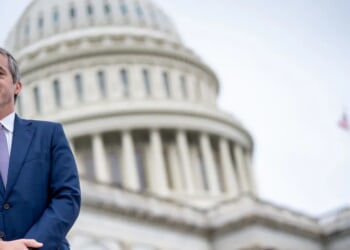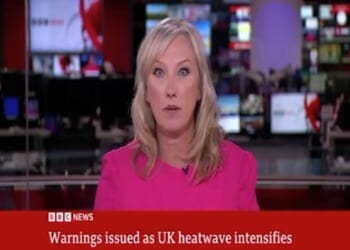The Government should look at “fixing capital gains tax”(CGT) if it wants to “tax wealth better”, so says an advisor at the left-leaning Centre for the Analysis of Taxation.
Renewing calls for a fresh CGT raid, they claim that Labour could double its tax take by bringing CGT in line with income tax.
That is the genius of Arun Advani, the same adviser whose research formed the basis of Labour’s inheritance tax grab on farmers, which has seen a record number of farm closures in its wake.
If that association didn’t make you think it was a bad idea to begin with, let’s dig into it a little further.
The Chancellor has already raised the rate of CGT to 24 per cent for higher rate taxpayers, and 18 per cent for basic rate taxpayers – and it is unlikely to pay off.
Despite rule changes designed to raise more tax, new figures have shown that the amount of CGT paid plummeted from £14.6 billion in 2022-23 to £12.1 billion the year after. Separate provisional figures from HMRC have indicated a further 10 per cent drop in CGT receipts in 2024-25.
So CGT changes have backfired, in fact. Successive cuts in allowances caught more taxpayers in the CGT net, Reeves then increased rates – and official figures still set out a sharp drop in CGT receipts. (Speculation and fear that a potential incoming Labour Government would ramp up wealth taxes like these could have also played a part in figures before Reeves came to power.)
Business Secretary Jonathan Reynolds has said “we won’t do anything daft like a wealth tax”, which at least hopefully rules out an explicit option – it could, however, leave the door open to increases to a stealth wealth tax.
And his Conservative Party opposite number Andrew Griffith was right to tell the Mail that CGT is “a wealth tax by another name”.
CGT is a fairly easy tax to avoid or postpone because it is often within your control to decide when to sell the asset that will trigger a tax bill – and it’s likely that people are already managing their affairs to reduce their tax bill under the new rules.
Could we possibly introduce Labour to the Laffer Curve, the economic theory that suggests there is an optimal tax rate to maximise Treasury coffers and illustrates the idea that policy changes affect taxpayer behaviour?
Too low a tax rate and the tax system will not bring in enough money, but too high and taxpayers will find ways to avoid paying or leave the country altogether.
A large proportion of CGT revenues derive from a small number of taxpayers, so you only have to change a few people’s behaviour to lower receipts.
Accounting firm RSM estimated that in 2023 just 2,000 people with capital gains of over £5 million paid 37 per cent of all CGT. Raising the rate further “could materially distort their behaviour,” RSM have warned.
Trying to attack the fact the rich are mobile and able to manage their affairs doesn’t make it less true, and the Treasury is seeing the effects of that.
But Chancellor Rachel Reeves back in 2018 actually floated the idea of effectively equalising CGT and income tax rates:
“Taxing the savings and investment income of higher rate taxpayers can be increased. Capital gains tax could be reformed, halving the annual allowance, having it paid at income tax rates and improving tax compliance.”
The UK’s well off are already highly taxed, with the top one per cent paying 29 per cent of all income tax. Bumping up one of the two taxes we already charge on their wealth – the other being IHT – may sound good, but it is unlikely to end well.
When in 2008 Alistair Darling stopped treating capital gains as some kind of income (taxing at 10 per cent, 20 per cent and 40 per cent) and introduced a flat rate of 18 per cent, there was a certain satisfaction amongst this well off group. The later introduction of entrepreneur’s relief also then gave innovators a nice break.
But in what looked like simplicity, the complicated stuff that Darling abolished — tapering and indexation – was missed.
Before Darling, gains were indexed to inflation. You were only taxed on real gains, not nominal gains. So paying CGT would not make you poorer in inflation adjusted terms. When that indexation went, along with it went the rather nice idea that you should only ever pay taxes on real gains.
So even if you were to follow Advani and the 2018 version of Reeves in looking at aligning CGT with income tax, if it was not indexed to inflation, it would not just be a tax on capital gains but a very high tax on wealth (with it being taxed on nominal not real gains).
It may end up disincentivising saving and investment as if the value of the asset you hold rises just in line with inflation, you currently would still end up having to pay tax even though the real value of the asset hasn’t changed. High CGT ends up a tax on a lot of gains that aren’t even gains.
The country is facing a serious economic picture. All it takes is a quick look at Treasury receipt books and a glimpse at the Laffer Curve to help realise that a higher stealth wealth tax like CGT is unlikely to be the answer.



![Former Bravo Star Charged After Violent Assault Using a Rock-Filled Sock in Tennessee Walmart [WATCH]](https://www.right2024.com/wp-content/uploads/2025/07/Former-Bravo-Star-Charged-After-Violent-Assault-Using-a-Rock-Filled-350x250.jpg)



![Karoline Leavitt Levels CNN's Kaitlan Collins and Other Legacy Media Reporters [WATCH]](https://www.right2024.com/wp-content/uploads/2025/07/Karoline-Leavitt-Levels-CNNs-Kaitlan-Collins-and-Other-Legacy-Media-350x250.jpg)
![Man Arrested After Screaming at Senators During Big Beautiful Bill Debate [WATCH]](https://www.right2024.com/wp-content/uploads/2025/06/Man-Arrested-After-Screaming-at-Senators-During-Big-Beautiful-Bill-350x250.jpg)

![Illegal Alien Walked Free After Decapitating Woman, Abusing Corpse for Weeks [WATCH]](https://www.right2024.com/wp-content/uploads/2025/07/1753013138_Illegal-Alien-Walked-Free-After-Decapitating-Woman-Abusing-Corpse-for-350x250.jpg)






